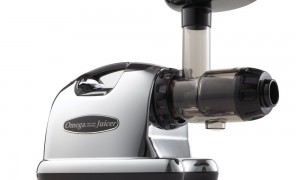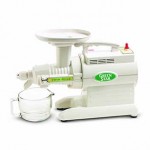How To Find The Best Juicer For Your Needs
And Feel Good About Your Decision
Figuring out which juicer bests suits your needs can be a troubling task at first, but with some experienced advice, an idea of what you want to juice (and why); combined with a set budget — the whole process becomes a lot easier.
There are essentially only three major types of juicers on the market:
Citrus Juicer
First up, we have the citrus juicer. As the name suggests, this juicer has a very singular purpose: to get the most liquid out of citrus fruits. Making it perfect for orange, lime, lemons and tangerine juice. The great thing about citrus juicers is their price, with the best selling model on Amazon going for around $25.
The prices range from $5 for manual ones all the way up to $50 for the electric-motor based ones.
If your personal goal is to drink a tall glass of natural vitamin C daily, getting a citrus juicer is a grand idea indeed. Simply cut any citrus fruit in half, hold any half over the pulverizer and switch on the juicer — and a perfect glass of fresh juice is ready within a few moments.
It’s kinda hard to beat the citrus juicer in terms of price, quality and speed. Of course, the juicer’s highly specialized nature is also its downfall; what of you want to drink carrot juice one day?
That’s where we come to the crux of juicing, the age old battle between masticating and centrifugal juicers.
Masticating Juicers
Considered the greatest rival to centrifugal juicers, and the juicer of choice for vegans, health enthusiasts and dietitians, the masticating juicer is a slow press machine that squeezes every last drop out of any produce. As a matter of fact, masticating juicers so good at squeezing they’re used frequently to make peanut butter, pasta, sorbets and even baby food.
Using the power of torque, thanks to an auger that’s powered by a slow 80-100 RPM motor, masticating juicers are also known as cold press or slow juicers.
They’re also a tiny bit expensive; most decent ones will cost no less than $240, and quiet a few easily command up to $300 without batting an eyelid. But for serious juicers and professional kitchens, masticating juicers are the only way to go.
Berries, spinach, wheatgrass, kale, peanut, grapes, strawberries and everything else that the centrifugal juicer struggles with, the masticating juicers calls easy.
Add to that fact the phenomenal yield of a masticating juicer, and warranty 10-years, 15-years or limited lifetime warranties– masticating juicers really do pay for themselves in the long run.
And thanks to the slow-press auger, oxidization is minimal, meaning juices last for close to 72 hours inside the fridge — in perfect condition. Cleaning is also easier thanks to the fact most masticating juicers sport roughly the same shape and parts.
So, if you’re an avid juicer interested in juicing more exotic produce that needs to be kept longer in the fridge, with a more than modest budget and find no use whatsoever for pulp, the masticating juicer is most definitely the way to go.
Centrifugal Juicers
Considered the fastest and cheapest all-around solution, centrifugal juicers are ideal for the everyday kitchen that does not have any specialized juicing requirements. Essentially a customized blender for juices, centrifugal juicers use a razor sharp rotating blade to extract the juice out of whatever is dumped down their chutes.
Fast and cheap, the pulp that results from centrifugal juicers are also ideal four soups and stocks, and with a price tag of anywhere from $150 to $300 for the absolute top-of-their class brands, centrifugals are a great solution for juicers on a budget without any specific juicing needs.
However, there are a couple of drawbacks that need to be addressed, among them being the fact that somethings don’t juice well or at all in a centrifugal juicer. Berries, leafy greens and nuts are a waste of money when combined with bladed juicers.. The machine works best with apples, pineapples, mangoes, oranges and other chunky fruits that have plenty of liquid in them.
And then there’s the design issue: ranging from simple to flabbergastingly complicated — centrifugal juicers come in all shapes and sizes — which is why it’s absolutely essential to read reviews before buying one. While the simply well designed ones are easy to take apart and wash, the complicated ones are not.
And as we’ve mentioned previously, the centrifugal juicer is essentially a blender of sorts, which means it does make noise. A lot of companies enjoy advertising the “whisper quiet” operation their blade operated juicers sport, but nothing with a motor that spins anywhere from 3,600 RPM to 15,000 RPM is going to be near as quiet as the ads would have you believe.
The blade’s spinning motion creates heat, which oxidizes the fruit therefore giving it a shorter shelf life compared to juice from a masticating juicer. Freshly squeezed centrifugal juice will last about one-day in the fridge before the taste starts noticeably changing.
These are the simple facts that need to be kept in mind when buying a centrifugal juicer:
1. They don’t juice everything–keep it to chunky and juicy fruits only.
2. They are loud.
3. They oxidize juice.
So, for a quick, cheap and effective all-around juicing experience (and one that’s easy to clean up depending on the model’s design), nothing beats a good centrifugal juicer.
Keep in Mind...
Of course, off all the three juicer types mentioned, before deciding which one suits your needs best, make sure to read through our review sections and pick up some recipes too — to get you all ready and set for your journey to juicing.




